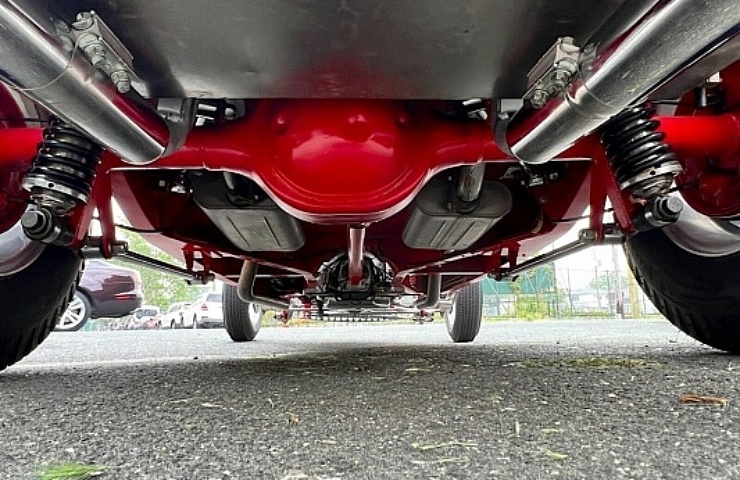Contents
What Is Gear Ratio?
The basics will help you calculate the gear ratio, so let’s start at the beginning.
- A gear is a toothed wheel that changes rotational movement.
- Gears are available in many sizes and shapes, each creating a unique power transfer.
- When two or more gears come together, movement transfer occurs. This is a gear train.
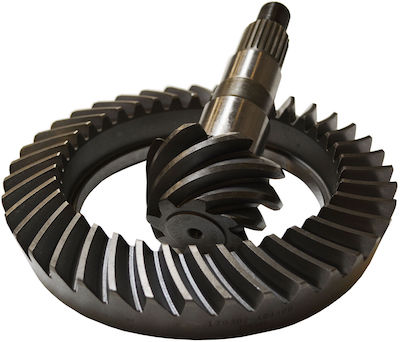
Dana 30 – 4.56 ratio ring and pinion
Turning one gear in a train causes the others to turn. The first gear—the one that’s starting the motion—receives some form of turning force. For example, tool movement begins with your hand, just as a bike is powered by your foot and a car is propelled by a motor.
This first gear is the input or driving gear since it initiates movement across other gears. The final gear is known as the output gear.
- The term “gear ratio” refers to the circumference of the input gear in relation to the circumference of the output gear.
- Gear ratio calculation determines the number of teeth each needs to produce a desired outcome: speed, torque, or angular velocity.
Here’s an example.
- Driving gear contains 12 teeth
- The next gear contains 21 teeth
This gear ratio is written as 12:21, or it can be simplified to 1:1.75. Basically, every time the 12-tooth gear turns, the larger gear will turn 0.57 times (1/1.75).
Terminology
Let’s take it to another level. As you add more gears, the gear ratio develops. After adding a gear to the end of this chain with 42 teeth, we now have a gear ratio of 1:2 between the second and third gears. The third gear takes half a turn every time the second gear turns.
Therefore, with every single turn made by the driving gear, the third gear makes 0.29 turns (0.57/2).
The terminology can be confusing. This should help:
- A numerically-higher ratio is called low or short, where a numerically-lower ratio is called high or tall. So 4.56:1 is considered lower than 3.73:1.
- A tall ratio gives a higher top speed at a given engine rpm than a low ratio, at the expense of acceleration.
- A low ratio, conversely, gives better acceleration at that engine speed at the expense of top speed.
Why is Gear Ratio Important?
The gear ratio of a complex system, such as your transmission, is critical to its operation. Here are just a few reasons it matters.
- The gear ratio of the top gear determines cruising rpm, affecting noise level and fuel efficiency.
- Taller gear ratios mean less road noise and better fuel economy. Taller gear ratios also mean downshifting is necessary to overtake other cars.
- Aggressiveness is determined by how short the gears are. Aggressive cars reach the redline at lower speeds to improve acceleration at the expense of fuel economy.
- The gap between gears is also determined. The closer the gap, the better acceleration becomes while improving fuel economy. That’s because the engine remains in a good rpm zone.
- Closer ratios can make the highest gear too short or the first too long, requiring either more gears or a wider ratio.
On a smaller scale, consider riding a bike. If you go uphill in a low-speed gear, you gain more torque. Yes, you have to pedal more, but the ascent is easier.
How Do I Calculate Gear Ratio?
Okay, get ready for some math, physics, and geometry. The gear ratio is determined by dividing the driving gear’s circumference by the output gear’s circumference. To find the circumference of a gear, use the same equation as you would with a circle.
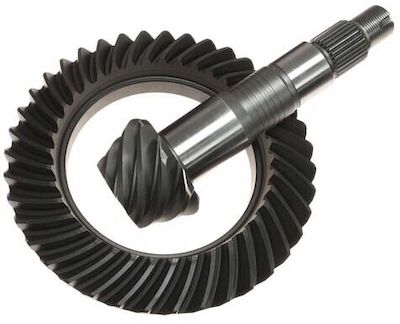
Toyota Tacoma/Tundra – 4.56 ring and pinion
The equation resembles this model:
gear ratio = (π × diameter of input gear)/(π × diameter of output gear)
You can also make it simpler by doing either of these two ways.
- Gear ratio = (diameter of input gear)/(diameter of output gear)
- Gear ratio = (radius of input gear)/(radius of output gear)
You can also evaluate the gear ratio by looking at the number of teeth on each. That leaves us with this equation.
- gear ratio = input gear teeth number/output gear teeth number
To express the gear ratio, you have several options.
- Fraction/quotient. Simplify it by dividing the numerator and denominator by the greatest common factor.
- Decimal. This method shows the amount the input gear must be turned so the output gear can make a complete revolution.
- Numbers with a colon. Illustrating it as 2:5 shows the fewest revolutions needed for both gears to return to the original position simultaneously.
Best Gear Ratios for Different Driving Situations
You want a different gear ratio for optimal performance depending on how you use your vehicle. Let’s take a look at a few common examples.
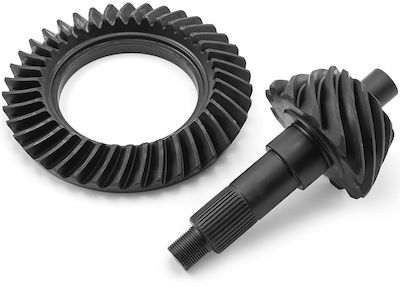
Ford 9-inch 4.30 ring and pinion
- Towing. When you tow a light load, 3.73 is ideal. On the other hand, heavy towing may require 4.10. Opt for the heavy towing ratio if you are hauling more than 5,000 pounds.
- Off-roading. Some off-roaders find success between 3.21 and 3.93. However, tire size does make a difference. For example, with 33-inch off-road tires, 4.56 is optimal.
- Acceleration/cruising. If you spend a lot of time on the highway, you’ll prefer a higher gear ratio.
- Torque. The lower gear ratio works best if you are looking for more torque to get moving from a starting position.
CVTs
The continuously variable transmission (CVT) is a popular option nowadays, but it’s fundamentally different from a traditional automatic transmission. Instead of gears, the CVT contains pulleys. Subaru was the first to use the CVT in the 1980s. Today, Nissan and Mitsubishi rely heavily on CVTs, while GM, Kia, Honda, and Hyundai have them in vehicles with smaller engines.
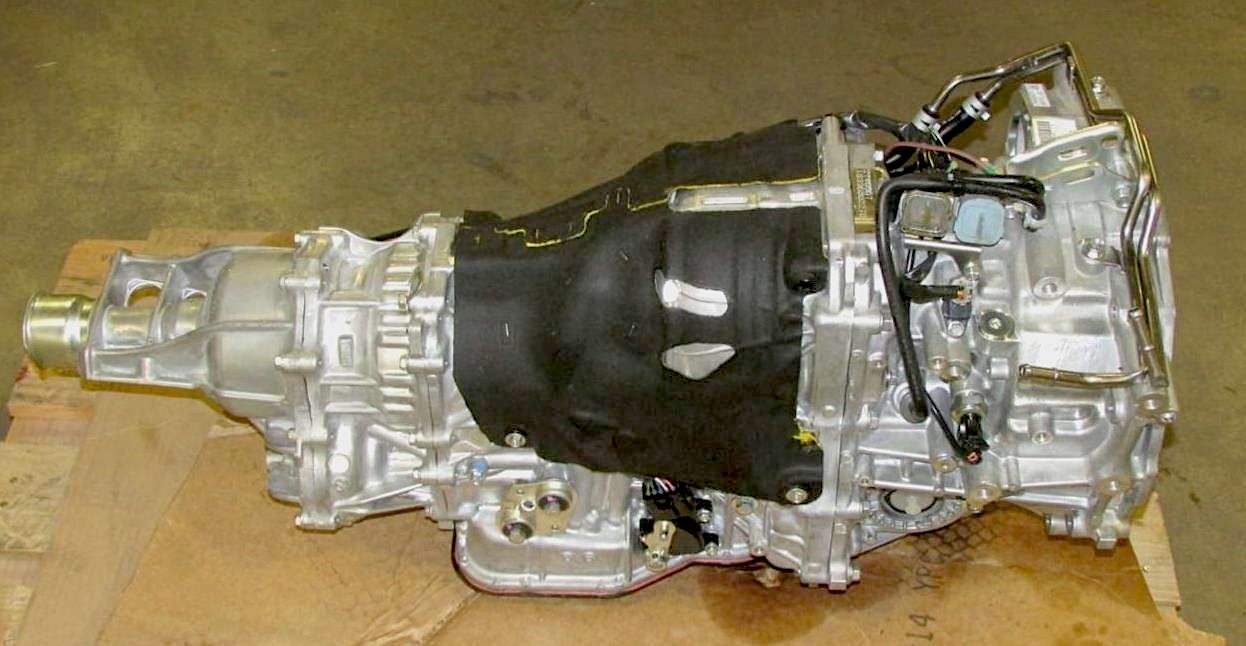
Subaru CVT
With the pulley system, CVTs achieve a near-infinite number of gear ratios. The pulley connects to the crankshaft (driving gear), with the other end on the drive shaft (driven gear). A V-belt is installed that moves around freely on the pulleys. The ECU dictates the movement of the pulleys through electronic signals.
The pulley width changes based on the driving speed. As one pulley gets bigger, the other becomes smaller to accommodate different gear ratios.
CVTs are more efficient because the gear ratio remains in a preferred position depending on the situation. It’s always offering maximum output for that rpm range. With this efficiency, no extra fuel is wasted, the engine remains at lower rpm during cruising, and it is instantly given more power when acceleration begins, with no shifting required.
With a CVT, there’s no need to worry about gear ratios.
Shop now for CVTs
